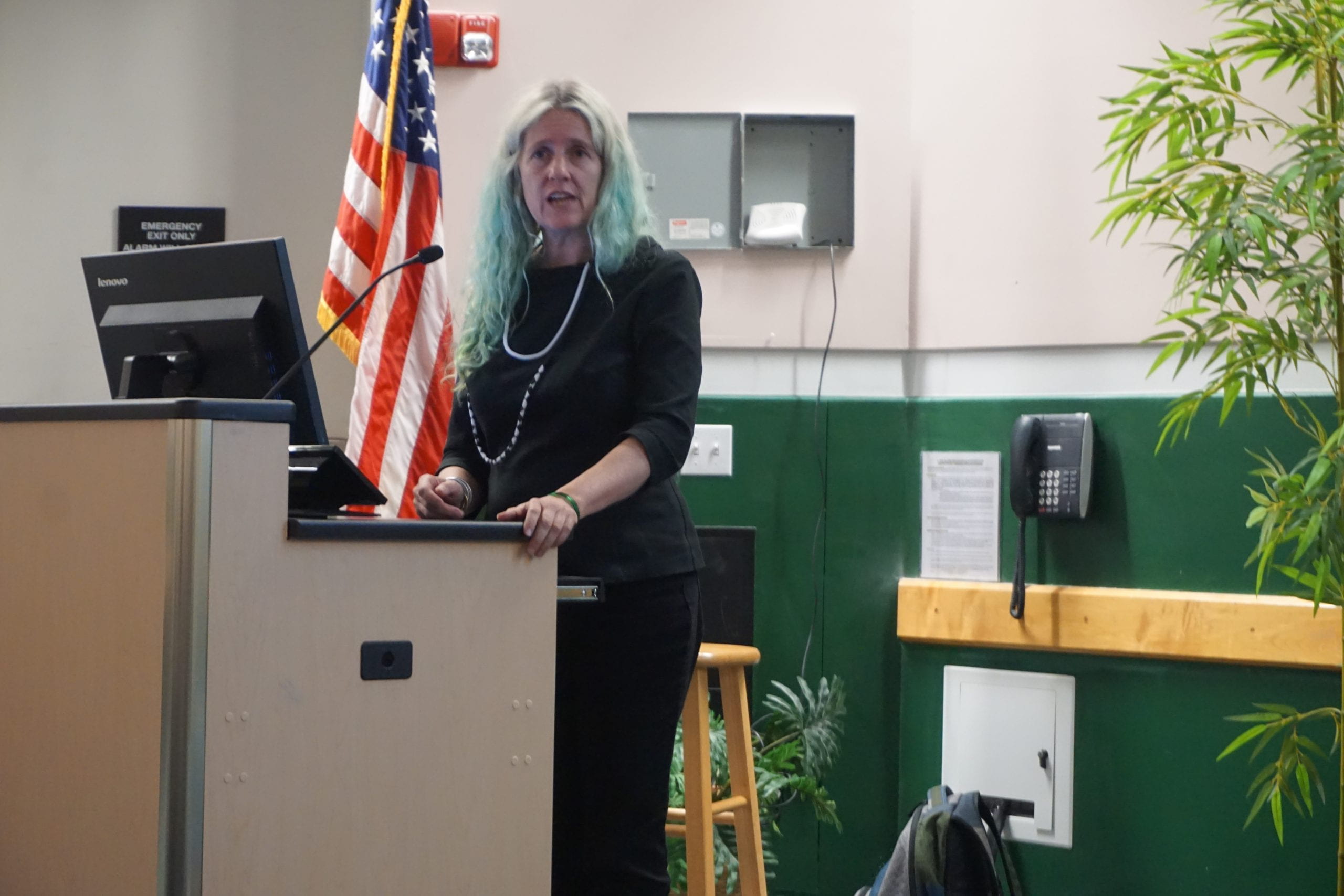Manicia Reneus
North Bureau Chief
STEAM Visiting Art series shows students that insects are not just bugs that people go frantic over and quickly grab a shoe to squash.
Jennifer Angus brought art and entomology together to show students that insects can be a part of art. Additionally, Angus shared with students that insects add value to the world.
Insects are used as embellishments in different cultural groups. During Angus’s lecture, she showed a slide of Africans wearing embellished head pieces and jewelry that was inspired by the pattern on many insects.
Not only are insects used aesthetically for art, but they also play a big role in the ecosystem. Angus mentioned that 70 percent of the food we eat comes from insect pollination.
Although insects are not endangered, there habitat is. Humans’ demands for agriculture and urbanization is a threat to their environment. By using wood for furniture that comes from the rainforest, people are endangering insects’ habitat.
Angus uses real insects that are dead and dried in her installation. The insects’ colors are natural. There is no paint used on them. Most of the insects that Angus used are from Thailand and Malaysia.
Frequently, Angus tries to use farm insects. These types of insects are raised with the purpose of marketing to collectors. For example, museums would probably go to these farm insects to get them on display.
When people look at her installations, she wants them to feel like they have never seen anything like it before.
“One of the things I’m trying to challenge in my work is that wonder,” said Angus.
Angus believes that in most people’s childhoods they were in awe by something almost every day. As an adult, some individuals may not have those wow moments.
Angus tries to create those moments in her installations and exhibits.
At first glance, Angus’s installations look like wallpaper. One of the slides displayed a green and pink pattern with oval shapes that made a circle.
However, when an individual looks closely they discover that the walls have insects on them.
Throughout Angus’s exhibits, she tells stories. In one of her exhibits, she tells the story- I don’t know why that old lady swallowed the fly.
Instead of having the old lady at the table there were animals that surrounded the rectangular table. A fox hides under the table while a fly stayed on top of a plate. This exhibit explains how every animal plays a part in a setting.
Angus has published a children’s book called In Search of Goliathus Hercules. The book is about a 10-year-old boy who discovers that he can communicate with insects. In the story, the boy turns this ability to a job and leaves home for an adventure.
Angus uses storytelling in other exhibits to give insects human qualities that would change people’s perspective about insects.
